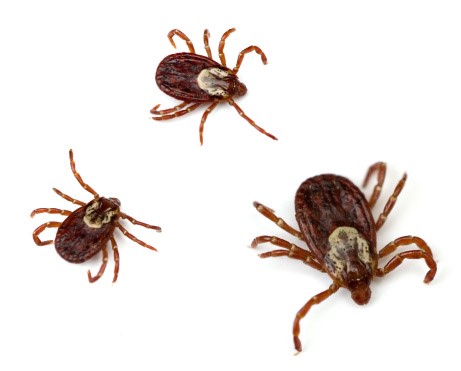Five Myths About Ticks
 Ticks and other creepy-crawlies return every year, bringing a swarm of health myths with them. Between endless ideas on the Internet combined with tick-related anxiety, it’s easy to be misguided. This tick season, know before you go and separate myth from fact.
Ticks and other creepy-crawlies return every year, bringing a swarm of health myths with them. Between endless ideas on the Internet combined with tick-related anxiety, it’s easy to be misguided. This tick season, know before you go and separate myth from fact.
Dr. Rachel Chaltry, an urgent care physician at Aurora Bay Area Health Center in Marinette, Wis., shares five myths about ticks and the facts behind them:
Myth 1: Ticks can easily be removed by lighting a match.
Fact: “The best way to remove a tick is by using a tool sometimes called a Tick Tornado, which can be purchased at most stores – no fire necessary,” says Dr. Chaltry. Another way to remove a tick is by using a tweezers.
“Carefully remove the tick by gripping the body as close to the skin as possible and pulling with a swift, even motion,” she says. Afterwards, clean the area with rubbing alcohol or soap and water.
Myth 2: You only need to worry about ticks in the warmer months.
Fact: Yes, ticks are often found between the months of April and November. However, certain tick species move indoors during winter months, while others survive outside.
Myth 3: Ticks only live-in wooded areas and fall from the trees.
Fact: Ticks live on the ground and crawl up blades of grass to their prey. Though you may find ticks near your head, it is more likely they crawled up from your ankle or found their way when you were closer to the ground.
Myth 4: Ticks can smell blood.
Fact: Though it is true that ticks follow scent to hunt their prey, they do not follow the scent of blood. Ticks find their victims by following the scent of CO2, emitted every time you take a breath. In fact, when a tick smells your CO2, they scramble up blades of grass or similar foliage and wait, arms extended, for a person or animal to just happen to brush past.
Myth 5: If you do not have a bullseye rash, you do not have Lyme disease.
Fact: “A bullseye rash is typically the first sign of infection,” Dr. Chaltry explains. “However, the rash only occurs in 70-80% of Lyme disease cases. The disease can present itself anywhere from days, weeks, months or even years after the initial infection.” Visit your doctor if you develop a rash, flu-like symptoms, or fever after removing a tick.
Always take precautions before and after spending time outdoors, especially during tick season. Not all ticks carry disease, but you can never be too careful. Apply DEET or permethrin to your clothing to repel ticks and insects. Avoid walking in long grass if you can help it. After being outdoors, take the time to check your body – behind your ears, in your hair, behind your knees, wherever your skin is thinner and everywhere else – for ticks, and shower if possible.
Remember, your pets can be sources of ticks if they go outdoors. Make sure to check with your pet’s veterinarian for trick prevention treatments.
Article contributed by: Cali Nygren
Tags: #health, #mythsaboutticks, #parishnurse, #ticks

Comments are closed here.